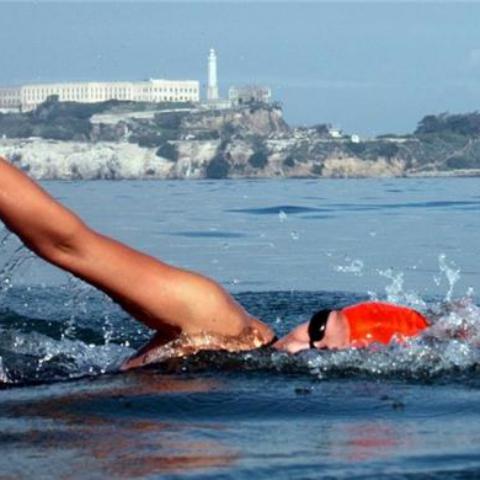Swim across the ENGLISH CHANNEL
 Swimming the 21-mile English Channel is considered the "Everest of open-water swimming." People who attempt to do this have to contend with cold, exhaustion and the stress of dodging sea traffic in one of the world's busiest shipping corridors.
Swimming the 21-mile English Channel is considered the "Everest of open-water swimming." People who attempt to do this have to contend with cold, exhaustion and the stress of dodging sea traffic in one of the world's busiest shipping corridors.Why is the English Channel the top open water swim and such a hard swim?
There are a lot of factors that combine to make the swim hard.
The English Channel is approximately -19 nautical miles (38000 yards) or 35 kilometres (35000 mtrs) - wide at its narrowest point (actually 18.2 nm from Shakespeare Beach, Dover to Cap Gris Nez, France). Most swims are a little longer to the landing on either side.
The Tides are strong and change direction approximately every 6 hours.
They flow to the North East from about 1.5 hours before high water to about 4.5 hours after high water (Flood tide) -
then turn and flow South West from 4.5 hours after high water to 1.5 hours before high water (Ebb tide).
These tides can flow at up to 4 nautical miles per hour. The tide gets later every day by about 1 hour and change in height and flow speed every day.
The lowest flow/ height range is known as the NEAP TIDES and is the time most swimmers try to swim.
The highest flow/height range is the SPRING TIDES and require calm weather and good piloting for swims to be successful. (Good spring tide swims are usually a little faster the neap swims but require a lot more planning an skill from the pilot).
The wind and the weather are an unknown quantity and the forecasts are only approximate. The Dover Straits are prone to local weather conditions that can vary considerably from that which is forecast and the weather can change very quickly (15/20 mins).
When you combined wind and tide you can have some very sudden changes in sea conditions.
Wind and tide together give a flatter sea that is "long" and more settled than wind against tide.
Wind against tide creates a "short" confused sea. The stronger the wind and tide the rougher the sea gets, (remember that the tide changes direction every 6 hours)
There are over 600 commercial ship movements a day in the traffic separation zone, (which is about the middle 9 nautical miles).
To go from England to France you have to swim across the shipping lanes (at 90°T to the traffic) and it is the pilots job to stay out of the path of the commercial vessels.
There are 80 to 100 ferry crossings between Dover and Calais every 24 hours. It's avery busy area.
Put all these things together, include a large portion of mental tension, note that everything is "approximate" or "about" and you have the worlds hardset swims -- "The Everest of open water swimming". The success rate each season is usually less than 50% for the solo swims.
Source: channelswimming.com